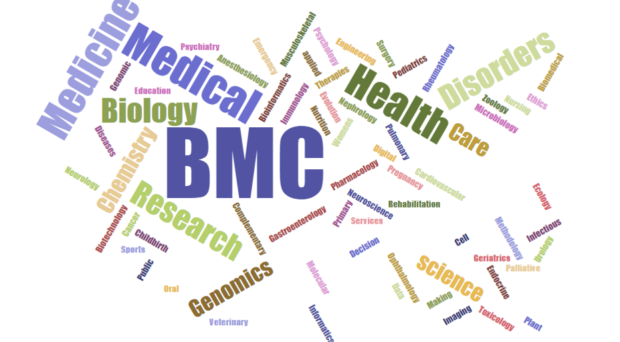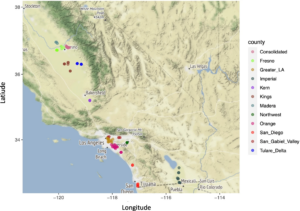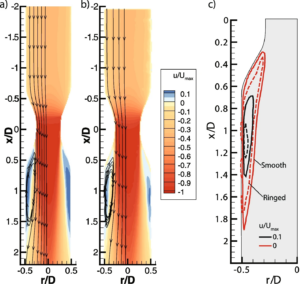

BMC Complementary Medicine and Therapies – Effects of laughter yoga on health-related quality of life in cancer patients undergoing chemotherapy: a randomized clinical trial
Laughter yoga is a type of complementary therapy which promotes deliberate laughter in combination with yoga breathing practices and yoga stretching poses. Intentional laughter can provide benefits equal to those of spontaneous laughter derived from jokes or humor programs, releasing a rush of stress-busting hormones.
In this randomized clinical trial, the authors investigate the effects of laughter yoga on health-related quality of life of cancer patients undergoing chemotherapy. The intervention group received laughter yoga for four sessions at one-week intervals. The patients’ health-related quality of life (HRQOL) was evaluated using the Quality of Life Questionnaire European Organization for Research and Treatment of Cancer. The study questionnaires were completed before and after the laughter yoga sessions by the cancer patients, through interviews, meanwhile the control group received a self-care training education.
The findings of the study showed that laughter yoga contributed to improvements in emotional and physical functioning, reduction of fatigue, pain and sleep disturbance, and enhanced quality of life compared to the control group. Laughter yoga comes with many advantages as it is an easy, cost-effective, and affordable method that can be also taught to patients so that they can practice this by themselves, increasing their self-care management.
BMC Primary Care – “You’re stuck in the middle here”: a qualitative study of GPs’ experiences of managing knee pain attributed to a degenerative meniscal tear

Degenerative meniscal tear (DMT) is common in adults over 35 years of age. Unlike the acute meniscal injury that is associated with acute trauma, DMT often shows up spontaneously and it is usually considered atraumatic. The first management approach for patients with symptomatic DMT, includes exercise, physiotherapy and pain medication.
In this qualitative study, the authors investigated the general practitioners’ (GPs) experiences of managing patients with knee pain attributed to a DMT. Seventeen GPs were recruited in the South and Mid-West of Ireland and data were collected using semi-structured interviews. The findings showed that the GPs sometimes found difficulties in facing patient’s treatment expectations, which are often oriented toward a ‘quick fix’ or passive treatment, such as surgery or injection. Furthermore, some GPs expressed their concerns about the limited access to public physiotherapy and orthopedic services within the Irish healthcare setting.
This study highlights the importance of filling the gap between patients’ expectations and best practice in the management of DMT. New training for GPs to empower their skills to prescribe exercise aligned with patient’s goals would facilitate their job, providing a better service for the patients and reinforcing the clinician-patient relationship.
BMC Genomics – Genomic signatures of local adaptation in recent invasive Aedes aegypti populations in California

Aedes aegypti mosquito is the primary vector of dengue fever, which is the most widespread vector-borne infectious disease. The state of California has an active mosquito-monitoring program since 1917, although only sporadic specimens of Aedes aegypti were detected for decades near airports. Since 2013, breeding populations have been reported in different cities, indicating that the mosquito has now become established and is spreading throughout large areas of California.
In this study 96 individual adult female Aedes aegypti from 12 geographic districts were collected across southern and central California. The authors integrated whole-genome sequencing data from mosquitoes with 25 annual topo-climate variables. This approach resulted in the identification of 112 genes showing strong signals of local environmental adaptation among the population, and most of them were supported by multiple environmental variables, with the top three variables including AHM (annual heat-moisture index), CMD (Hargreaves climate moisture deficit) and DD18 (degree days below 18 °C). Among the top genes, the authors identified genes involved in biological processes with an important role in adaptation to local abiotic environmental conditions, such as cell growth, response to stress and DNA repair.
The findings show how the adaptive evolution is a driving force for the emerging or re-emerging of viral diseases. This work highlights the importance of the disease-vector genotypes to deal with the occurrence of invasive species that cause ecological and economics harms.
BMC Biomedical Engineering – Effect of cartilaginous rings in tracheal flow with stenosis

A normal trachea has a structure supported by a series of C-shaped rings of cartilage linked together. In most respiratory fluid dynamic studies this characteristic is omitted and the assumption is that the trachea and the bronchi have smooth walls. When a tracheal stenosis is present its characteristic rings appear as O-shaped and constrict the airway.
In this study the authors tried to understand the effect of cartilaginous rings on the flow passing through a stenosed trachea with Grade II stenosis. They measured the flow inside two simplified trachea models at resting breathing state, using two-dimensional particle image velocimetry (PIV) which allows them to perform non-intrusive velocity field measurements close to the wall. One model has a smooth wall, and the other model has idealized symmetric rings. The results showed that the cartilaginous rings disturb the flow inducing velocity fluctuations and turbulence near the wall, although minor differences were observed in the mean velocity field when compared to the model with smooth wall.
The model described in the study highlights the importance to consider cartilaginous rings and other small structures along the airway wall. These observations could have important medical implications, including the development of diagnosis and treatment protocols for different diseases, pollutants and drug delivery.
BMC Medical Imaging – Identification of triple-negative breast cancer and androgen receptor expression based on histogram and texture analysis of dynamic contrast-enhanced MRI

Female breast cancer is the most commonly diagnosed cancer, and it is represented by different types of cancer, with each type including different symptoms, diagnosed methods and treatments. In triple negative breast cancer (TNBC), the cancer cells don’t have receptors for the hormones estrogen and progesterone and for HER2. Compared to other subtypes, TNBC shows a higher risk of developing distant metastasis and death following locoregional recurrence. As a consequence of lack of therapeutic targets, the treatment options for this type of cancer are few and have a poor clinical efficacy. The androgen receptor (AR) is emerging as a promising prognostic marker for TNBC and new studies are now aiming to investigate the related potential of receptor-targeted therapies.
In this retrospective study the authors selected 99 patients, represented by 36 patients with histologically confirmed TNBC and 63 patients with non-TNBC, who underwent breast dynamic contrast-enhanced magnetic resonance imaging (DCE-MRI) before surgery. The authors calculated the pharmacokinetic parameters of DCE-MRI and their corresponding texture parameters between TNBC and non-TNBC groups, and AR-positive (AR+) and AR-negative (AR-) TNBC groups. The results showed how the pharmacokinetic parameters of DCE-MRI were significantly different in AR-TNBC from AR+TNBC.
The findings highlight how DCE-MRI can be used to predict AR expression in patients with TNBC using DCE-MRI-based pharmacokinetic parameters containing histograms and texture features. The assessment of intratumor heterogeneity has a great potential in clinical practice as it could help to improve diagnosis and to provide tailor-made treatment strategies for each patient.
Comments